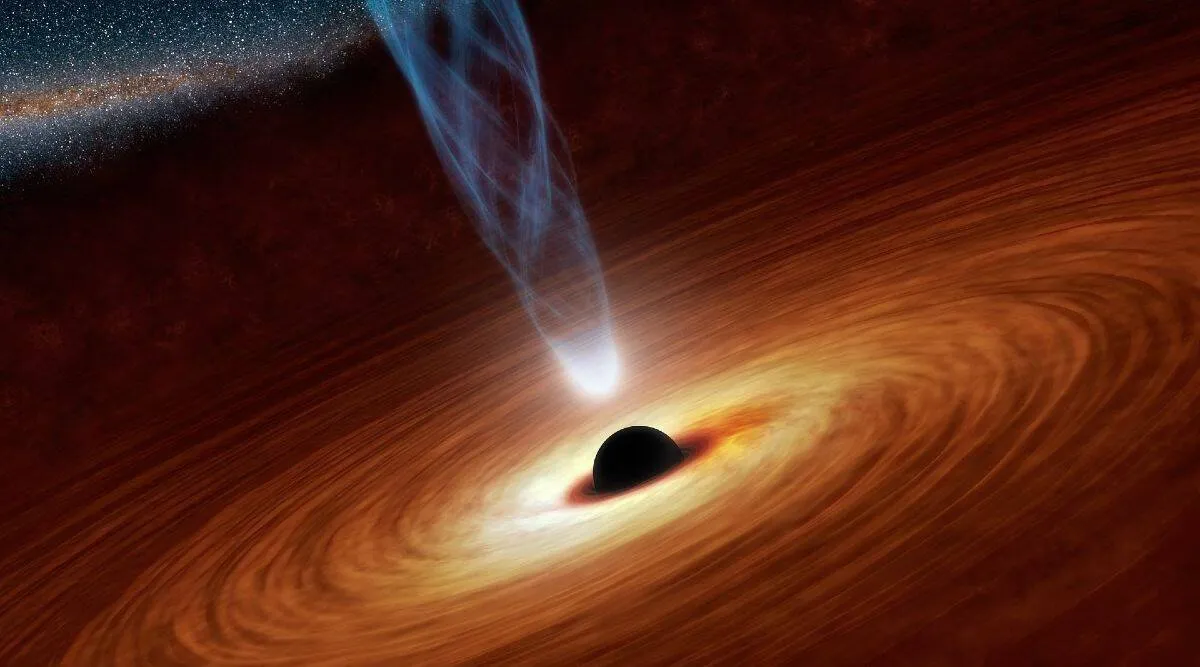To me black holes are the biggest wonder of the universe. Black holes have huge gravitational forces that we ordinary people cannot imagine. Because of this gravity, even light cannot come out of a black hole. . Scientists are now focusing on black holes. They are doing extensive research on it. Today we will discuss about black holes so that we can know something about black holes.
Black holes are defined by the NASA
“A black hole is a place in space where gravity pulls so much that even light cannot get out. The gravity is so strong because matter has been squeezed into a tiny space. This can happen when a star is dying. "
We understand what a black hole is. A black hole is basically created from dead stars. We will discuss in the next post how a black hole is created from a dead star. We know that when we apply pressure to any object, it tends to shrink. The black hole has shrunk due to its huge amount of gravitational force.
Black holes can be small, medium and large in size. A small black hole is equal to an atom but its mass is huge. The energy of a black hole equal to that of an atom measures the speed of light. This black hole can pull the earth towards itself and destroy it forever. This is the power of black holes. Ha ha what a wonderful universe. The mass of a stellar type black hole is equal to 20 suns. A sun is 1 million times bigger than the earth. That means one million Earths will easily fit into the sun. There are 20 such suns of mass in stellar black holes. Our galaxy Milky Way has numerous stellar black holes.
Large black holes are called supermassive black holes. Now the question is what is the mass of this black hole? The mass of a supermassive black hole is again equal to millions of suns. But these black holes occupy billions of billions of times smaller space than the sun. You realize that the mass of this black hole is so much steller black hole, small and big sun stars everything is moving towards this black hole. The galaxy was created because of this black hole. Each galaxy has a supermassive black hole at its center. The black hole at the center of our galaxy is called Sagittarius and has a mass of 4 million suns.
Does black holes can be seen? Light cannot come out of the black hole. As a result, black holes cannot be seen through telescopes. But the existence of black holes can be understood. Suppose a game is being played on a soccer field. You're out of that stadium. You can hear the noise of the spectators and understand that the football game is going on in that soccer stadium. In the case of black holes, it is understood that this is why it exists
According to NASA data
“A black hole cannot be seen because strong gravity pulls all of the light into the middle of the black hole. But scientists can see how the strong gravity affects the stars and gas around the black hole. Scientists can study stars to find out if they are flying around, or orbiting, a black hole.
When a black hole and a star are close together, high-energy light is made. This kind of light cannot be seen with human eyes. Scientists use satellites and telescopes in space to see the high-energy light. "
A black hole has always swallowed the planets and various cosmic objects near it. These black holes can swallow stars bigger than our sun in an instant. Black holes can destroy our planet in a matter of seconds. But we are so far away from the black hole that the black hole cannot pull the earth towards itself by this huge force of its own gravity, our solar system is orbiting around the black hole. Our Moon orbits the earth as it is but does not hit the earth. In exactly the same way our solar system orbits a supermassive black hole but does not crash into the black hole. Because the distance between the black hole and our solar system is a lot. If our earth were to reach a black hole one day, this black hole would swallow our earth. But our planet will have to travel billions and billions of years to reach the black hole.
This post is written according to the data of the space research organization NASA's website
Thanks for reading
Best regards

